AbwehrX
Posts: 314
Joined: 10/27/2013
Status: offline

|
This is a fun read-
http://www.militaryhistoryonline.com/wwii/articles/fateofkidobutai.aspx
quote:
Sow the wind, reap the Whirlwind - The Fate of the Kido Butai
by Larry Parker
Standing on the bridge of his flagship, the converted battle cruiser Akagi[1] , Admiral Chuichi Nagumo watched with satisfaction as his well trained air crews moved purposefully about the flight deck refueling and rearming the Nakajima B5N (97-2) 'Kate' torpedo bombers, Aichi D3A (99-1) 'Val' dive bombers and Mitsubishi A6M (0-3) 'Zeke' or 'Zero' fighters. Scanning the task force steaming with Akagi, Nagumo noted similar activity on the fleet carriers Hiryu, Kaga, Shokaku, Soryu, and Zuikaku. Escorting the aircraft carriers of the Kido Butai were the battleships Hiei and Kirishima, the heavy cruisers Chickuma and Tone, and the light cruiser Abukuma. Twelve destroyers and seven auxiliary oilers completed the Pearl Harbor Strike Force.[2]
The reports from the first two strikes had been staggering. At a cost of nine fighters, fifteen dive bombers, and five torpedo bombers his men had sunk the battleships Arizona, California, Oklahoma, Utah [3] , and West Virginia, badly damaged the Maryland, Nevada, Pennsylvania and Tennessee and destroyed or severely damaged over three hundred military aircraft stationed on Oahu.[4]
Commander Mitsuo Fuchida, still in his flight gear, reported to Nagumo. Recognizing the rare opportunity that beckoned Fuchida argued vociferously for follow on strikes. Nothing in Nagumo's face revealed his inner turmoil as he listened impassively. Fuchida's arguments were sound but where were the American carriers? Were the Enterprise, Lexington and Saratoga lurking over the horizon; their planes inbound even now, manned with grim faced crews seeking vengeance ? With his flight decks fouled with planes, ordnance and fuel, a few well placed bombs would turn triumph into disaster in a matter of moments. With a barely perceptible nod Nagumo finally gave his assent. Saluting smartly Fuchida hurried to brief his waiting pilots.
The third strike completed the destruction of battleship row and added numerous cruisers and destroyers to the growing list of stricken ships. In addition the submarine base where four subs were berthed was targeted. The fourth strike focused on the repair facilities, machine shops and power plant, making salvage of the ravaged fleet impossible. The coup de grace however, was the destruction of the oil tank farms containing 4.5 million barrels of fuel. Rendered useless as a forward operating base the American fleet abandoned Hawaii. Her remaining carriers, cruisers and destroyers were ordered to Long Beach, San Francisco and Seattle. In addition, much to the delight of Admiral Donitz and his U-Boat commanders and the dismay of Prime Minister Churchill and his naval staff, ships were withdrawn from the Atlantic fleet to help defend the now vulnerable American west coast. Quickly taking advantage of the strategic situation, Admiral Isoroku Yamamoto ordered the conquest of Wake, Midway and the Aleutian Islands, forming a strong outer perimeter.
During the Japanese blitzkrieg that followed, Admiral Nagumo and the 1st Air Fleet supported campaigns throughout the Pacific. Burma, Thailand, Malaya, Borneo, Java, the Celebes, the Philippines, New Guinea, Papua and Guam fell in rapid succession. Without the American Pacific fleet to oppose the Imperial Army and Imperial Navy, the Japanese tide of conquest rolled unabated across the Coral Sea to the Fiji Islands severing the sea lines of communication with Australia and New Zealand. This incredible feat of arms was capped by the Indian Ocean Raid. The operation began with an attack on the British naval base at Columbo, Ceylon destroying 27 aircraft and sinking the destroyer HMS Tenedos and the armed merchant cruiser HMS Hector in port, followed by the sinking of the British aircraft carrier Hermes, the heavy cruisers Cornwall and Dorsetshire, the destroyer Vampire, the corvette Hollyhock, the depot ship Athelstane and the oiler British Sergeant at sea. This stunning blow to the Royal Navy, coupled with the sinking of the battleship Prince of Wales and the battle cruiser Repulse east of Kuantan, plus the loss of Hong Kong and Singapore, devastated British sea power in the Pacific causing Admiral James Sommerville to abandon the Indian Ocean and retreat to East Africa. The sheer scope of her Pacific conquests gave the Japanese Empire nearly limitless resources to draw upon, immense depth to absorb the inevitable American counter attack and, perhaps most importantly, the precious gift of time for her tenacious soldiers and sailors to prepare a formidable defensive network. These factors added two bloody years and tens of thousands of casualties to the war before the brutal conflict reached its final conclusion.
In reality of course Admiral Nagumo took counsel of his fears[6] and withdrew after the second strike on Pearl Harbor. As the Kido Butai slipped away Japan's best chance to win the Pacific war sailed with it. Remarks attributed to Admiral Yamamoto indicate his keen assessment of the situation and proved remarkably prophetic, "In the first six to twelve months of a war with the United States and Great Britain I will run wild and win victory upon victory. But then, if the war continues after that, I have no expectation of success. . . I fear all we have done is awakened a sleeping giant and filled him with a terrible resolve." The Japanese flood tide of victory was stemmed at the Battle of Coral Sea and ebbed completely at Midway when Admiral Nagumo's fear of American carrier borne airpower became reality. In the aftermath of Pearl Harbor all ships but the Arizona, Oklahoma [7] and Utah were raised, repaired and, christened "The Ghost Fleet", served gallantly in the great campaigns that followed. Joined by hundreds of new ships and thousands of planes, the survivors of Pearl Harbor exacted a terrible retribution on the Kido Butai.
06 June 1942, Midway
First to feel the wrath of an aroused American nation were the Japanese fleet carriers. Stung by Doolittle's B-25 Mitchell bombers launched from the aptly named carrier Hornet an embarrassed Admiral Yamamoto devised a convoluted and grandiose scheme intended to lure the remnants of the United States fleet to destruction at Midway. Instead the Japanese fell victim to over confidence, flawed strategic planning and inept tactical execution. The United States, on the other hand, benefited from excellent naval intelligence work and determined American pilots. Caught, as Nagumo had feared at Pearl Harbor, with their flight decks fouled with rearming and refueling aircraft the Akagi, Hiryu, Kaga and Soryu became funeral pyres for over 2000 of Japan's best pilots and crews.
12-15 November 1942, Guadalcanal
Checked at Coral Sea, devastated at Midway, the Japanese fought furiously on land, at sea and in the air to regain the initiative at Guadalcanal. The fury on land was easily matched by the intensity of the conflict at sea. The naval battles of Savo Island, the Eastern Solomons, Cape Esperance and Santa Cruz were some of the most brutal engagements of the Pacific war. Due to superior night fighting skill and the deadly Long Lance torpedo the Japanese initially scored a succession of stunning victories, inflicting heavy losses on the Allied fleet. The tide turned on 12 November.
During the First Naval Battle of Guadalcanal the Imperial Japanese Navy (IJN) Battleship Hiei [8] took over fifty 8-inch and 5-inch hits from the USS San Francisco (CA-38), USS Portland (CA-33) and USS Sterett (DD-407) badly damaging her fire control and steering systems and setting numerous fires. Ordered to retire Hiei was repeatedly attacked by Marine Grumman TBF 'Avenger' torpedo planes from the recently captured Henderson field, TBF's and SBD 'Dauntless' dive bombers from the American carriers Enterprise and Saratoga and U. S. Army Air Force B-17's stationed on Espirtu Santo, absorbing incredible damage. Finally, after nearly twenty-four hours of punishment, flooding below the waterline, in flames above the main deck, listing badly to starboard and down at the stern, her captain ordered the Hiei scuttled.
In the Second Naval Battle of Guadalcanal, the IJN Kirishima[9] with her escorting cruisers and destroyers took on the USS South Dakota (BB-57) and USS Washington (BB-56). 14-inch and 8-inch shellfire disabled the South Dakota's communication and fire control systems effectively putting her out of action early in the fight. Washington, however, was able to steam undetected to within 5,800 yards and with radar directed gunfire hit Kirishima with nine 16-inch and over forty 5-inch shells. For battleships this is point blank range and the effect was devastating. Two of the Japanese dreadnought's 14-inch turrets were disabled, her rudder was destroyed and she was holed at the waterline. Unable to maneuver, other than to circle to port, ablaze above and flooding below the main deck, Kirishima was scuttled, rolled over to starboard and capsized. The first, and one of the few, battleship versus battleship encounters of the Pacific war ended with Kirishima adding 38,000 tons of scrap metal and over 300 lives to what became known as Iron Bottom Sound.
06 June 1944, Philippine Sea
At this point in the war, under the two pronged approach adopted by President Roosevelt,[10] the Navy / Marine Corps thrust through the Marshall Islands and the Marianas Islands under Admiral Nimitz and the Army spearhead under General McArthur through New Guinnea converged on the Philippines. To forestall the Americans, the Japanese assembled five heavy carriers, four light carriers, five battleships, eleven heavy cruisers, two light cruisers and 28 destroyers, commanded by Admiral Ozawa, to oppose Task Force 58 under Admiral Mitscher. Such was the industrial prowess of the United States that in the thirty months since Pearl Harbor, TF-58 came to battle with seven heavy carriers, eight light carriers, seven battleships, eight heavy cruisers, thirteen light cruisers and 69 destroyers. The two juggernauts came to blows west of Guam in the Battle of the Philippine Sea. It was another disaster for the Japanese. During the "Great Marianas Turkey Shoot" the Japanese lost three aircraft carriers and over 300 planes, among them the Shokaku, torpedoed by the USS Cavalla SS-244. Aircraft could be replaced. Aircraft carriers and experienced aircrews could not. The way was now clear for McArthur's promised 'return' to the Philippines.
20-25 October 1944, Leyte Gulf
On 20 October 1944 Army units boarded landing craft of Admiral Kinkaid's invasion (7th) fleet and stormed the beaches of Leyte while the far larger and more powerful 3rd Fleet, under Admiral Halsey, provided cover for the operation. Recognizing that the loss of the Philippines meant the loss of the Southern Resources Area and thereby the war, the Japanese gathered the combined fleet to counter the assault on Leyte. Under the Sho-Go (Victory) Plan, Ozawa's depleted carrier force steamed from Japan toward Luzon hoping to lure the American covering (3rd) fleet away from the invasion (7th) fleet, leaving the landing sites vulnerable. At the same time, the 1st Striking Force commanded by Admiral Kurita sailed from Brunei while the 2nd Striking Force under Admiral Shima got underway from Formosa. Their tracks crossed North of Palawan. Kurita continued through the San Bernardino Strait and Shima made for the Surigao Strait. These actions were calculated so as to catch the unprotected transports and support ships in a pincer movement thereby crippling the invasion. Sho-Go nearly succeeded. An always aggressive Admiral Halsey took the bait and steamed North with the entire 3rd Fleet seeking combat with Ozawa's decoy force. Sho-Go began to unravel however when Admiral Olendorf's bombardment group consisting of six battleships, five survivors of Pearl Harbor, crossed the "T" of Shima's Southern force as it emerged from the Surigao Strait and destroyed it. Heroic action by the sailors of Taffy 3 (six escort carriers, three destroyers and four destroyer escorts - part of Admiral Kinkaid's 7th Fleet) convinced Kurita he was facing the combined 3rd and 7th fleets. He withdrew on the cusp of victory allowing the American landing forces to escape destruction. During the Battle of Leyte Gulf three more veterans of the Kido Butai fell to the avenging Americans. The carrier Zuikaku, struck by planes from the Essex and the Lexington, sank east northeast of Cape Engano; the heavy cruiser Chickuma was torpedoed by aircraft northeast of Samar and scuttled; and the light cruiser Abukuma was bombed by USAAF B-24 Liberators and sank southeast of Negros. In all the Japanese lost four carriers, three battleships (including the super battleship Musashi), six heavy cruisers, four light cruisers, eleven destroyers, 500 aircraft and over 10,000 men. After Leyte Gulf the Imperial Japanese Navy was finished as an effective fighting force. Individual units would sortie in defense of Iwo Jima and Okinawa, most notably the Musashi's sister ship the Yamato, but nothing could now oppose a resurgent United States Navy and planning began for the invasion of the home islands. In preparation for Operation Olympic and Operation Coronet the last of the Kido Butai capital ships met her fate. On 24 July 1945 the heavy cruiser Tone was sunk by aircraft from Task Force 38 near Kure. Of the six carriers, two battleships, two heavy cruisers, one light cruiser, twelve destroyers and seven auxiliary oilers of the Kido Butai only the destroyer Ushio survived the Pacific war. Docked in Yokosuka for repairs she surrendered in August 1945.
The Destroyers and Support Ships
The record of the destroyers and auxiliary oilers of the Kido Butai easily equals that of thThe record of the destroyers and auxiliary oilers of the Kido Butai easily equals that of the capital ships following Pearl Harbor. Ship's logs include actions such as the 'Tokyo Express' supporting Japanese troops on Guadalcanal and escorting Yamato on her suicide run to Okinawa. Their story is too extensive for the scope of this paper however, and is therefore, summarized in TABLE ONE.
The Architects of Pearl Harbor Guadalcanal Admiral Yamamoto determined to conduct a morale building tour of Japanese naval bases in the south Pacific. Using "MAGIC" (the US equivalent of ULTRA) Naval code breakers decrypted his complete itinerary to include arrival and departure times. On 18 April 1943 sixteen P-38 Lightning's were dispatched to intercept the two Mitsubishi G4M fast transport aircraft on which he and members of his staff were traveling. Overwhelming the six escorting Zeros, the 'Betty' on which he was flying was shot down over Bougainville in the Solomon Islands. Killed either in the air or in the crash Yamamoto was found, according to Lieutenant Hamasuna, the officer who led the rescue mission, holding his katana befitting the Japanese samurai tradition.
A specialist in torpedo and destroyer tactics and an officer of the 'old school' Admiral NagA specialist in torpedo and destroyer tactics and an officer of the 'old school' Admiral Nagumo was ill suited to command the Kido Butai. Strict rules of sonority however precluded assignment of someone with a greater appreciation of the potential of naval aviation. Despite this, Admiral Nagumo enjoyed initial success at Pearl Harbor and, most especially, during the Pacific and Indian Ocean raids that followed. His reputation floundered with the catastrophic losses at Midway and after Guadalcanal he was given command of a small naval flotilla in the Marianas. To avoid the shame of surrender, on 06 July 1944 he committed seppuku during the final stages of the conquest of Saipan.
Lessons Learned
There are many lessons to be gleaned from the fate of the Kido Butai. Among them the limits of tactical and technical superiority and even operational surprise in the face of overwhelming industrial and logistic capacity. Also worthy of consideration is the element of 'chance' or 'luck'; for in the ebb and flow of battle, outcomes often balance on seemingly insignificant details and the decisions of fallible men, therefore nothing is inevitable. The need for audacity and resolve in battle was discussed in the opening paragraphs. Another cautionary note might be the utility of treaties when only one side abides by them or the cost in blood of weakness vice the price of preparedness. As Vegetius observed in his Epitoma Rei Militaris thousands of years ago, "If you want peace, prepare for war." Unfortunately, no matter how much we may wish it were so, nothing has changed since then. Aggressors are only deterred by strength.
Most noteworthy and most germane to our current circumstances however, is the utter ruthlessness with which America prosecuted the war. Slowly, methodically, with remorseless purpose the roots of German Nazism, Italian Fascism and Japanese Militarism, which led to the horror that was World War II, were completely razed, allowing the United States to lay the foundation for what are now modern, peaceful, democratic and successful nations. nemy not only her armies but also the will of her people must be destroyed. This is the harsh truth of war. Brutal? Yes. Callous? Yes. Pitiless? Yes. But for all that, none the less true. The atomic bomb dropped on Hiroshima killed between 90-160,000 people; the one that devastated Nagasaki caused another 60-80,000 deaths but they broke Japan's will to continue the war thereby saving an estimated three million [11] lives had an invasion of the home islands been necessary. Contrast that with the Treaty of Versailles which merely laid the foundation for World War II.
In 1941 the American people, like Sherman, understood the grim reality of war and devoted every resource, endured every hardship, accepted every sacrifice, however bitter, required to rid the world of her mortal enemies. Again contrast that mindset with today's protracted and ultimately inconclusive "police actions", "nation building missions" and "kinetic military actions" guided more by public opinion polls than credible foreign policy, much less sound military strategy. If we are to survive today's threats, and let there be no doubt, they are just as deadly if not more so for their unconventional nature than those faced on 07 December 1941, we must respond with the same resolve. As Sherman explained to the citizens of Atlanta, " War is cruelty and you cannot refine it; and those who brought war into our country deserve all the curses and maledictions a people can pour out."
* * *
Footnotes
[1]. The Akagi (Red Castle) and the Kaga (Increased Joy) were products of the Washington and London Naval Treaties - a converted battle cruiser and converted battleship respectively. They were comparable to the Lexington. Hiryu (Flying Dragon) and Soryu (Blue Dragon) were based on the Mogami class heavy cruiser sharing a similar hull design and machinery. They were comparable to the Yorktown. Shokaku (Soaring Crane) and Zuikaku (Auspicious Crane) were Japan's largest, newest and most powerful carriers. Purpose built after Japan abrogated the London Naval treaty, they were comparable to the American Essex class.
[2]. The destroyers Akebono, Akigumo, Arare, Hamakaze, Isokaze, Kagero, Kasumi, Sazanami, Shiranuhi, Tanikaze, Urakaze and Ushio sailed with the Pearl Harbor Strike Force. Akebono, Sazanami and Ushio were detached prior to the attack to bombard Midway Island. Supply Group One consisting of the Kyokuto Maru, Kenyo Maru, Kokuyo Maru and Shinkoku Maru and Supply Group Two consisting of the Toho Maru, Nippon Maru and Toei Maru provided support for the Japanese Task Force during its historic voyage.
[3]. Commissioned in 1911 the battleship Utah, now designated AG-16, was utilized as a gunnery training ship.
[4]. In addition to the battleships listed, the Cassin (DD-372), Downs (DD-375) and Ogala (CM-4) were also sunk. The Raleigh (CL-7), Honolulu (CL-48), Helena (CL-50), Shaw (DD-373), Curtis (AV-4) and Vestal (AR-4) were damaged. All were raised, repaired and served with the Ghost Fleet.
[5]. Unbeknownst to Nagumo Enterprise had been dispatched to deliver additional aircraft to Wake, Lexington was ferrying planes to Midway and Saratoga was undergoing repairs on the west coast.
[6]. General George S. Patton advised, "In planning any operation, it is vital to remember and constantly repeat to oneself two things: 'In war, nothing is impossible provided you use audacity, 'and 'Do not take counsel of your fears.'" Fortunately for the United States, Admiral Nagumo did not heed his counsel.
[7]. Oklahoma was raised but never rebuilt. Arizona and Utah remain as memorials to those killed at Pearl Harbor.
[8]. Laid down 04 NOV 1911, Launched 21 NOV 1912, Commissioned 04 AUG 1914 Hiei began her career as a battle cruiser of the Kongo class. She was converted to a training ship per the Washington Naval Treaty of 1922 however all equipment and armament was carefully preserved and stored. On 25 FEB 1933 Japan withdrew from the London Naval Treaty abrogating that as well as the earlier Washington Naval Treaty. Extensively reworked, Hiei returned to the fleet in 1937 as a modern fast battleship.
[9]. Laid down 17 MAR 1912, Launched 01 DEC 1913, Commissioned 19 APR 1915 as a Kongo class battle cruiser. Unlike her sister ship Hiei, Kirishima was retained in active service. She underwent extensive reconstruction in 1927 and 1934 emerging as a fast battleship.
[10]. Admiral King favored a thrust across the central Pacific with Formosa as the ultimate objective to cut the Japanese Empire in half denying her the Southern Resource Area. From a strictly military point of view this was clearly the superior strategy. For political reasons however, McArthur argued for a move from Australia to the Philippines liberating captured territory en route. Unable to prevail over the super egos of either King or McArthur, Roosevelt adopted both strategies and divided the Pacific into theatres allotted accordingly. It should be remembered that Allied policy was 'Germany first' and the fact that resources were made available not only for the Atlantic and the Pacific but also our Allies is a testament to American industrial capacity at that time.
[11]. Using Okinawa as a guide with a KIA ratio of 8:1. After the war, occupation forces found 10,000 planes and thousands of small, fast boats stockpiled for Kamikaze attacks.
TABLE ONE - Fate of the Destroyers and Support ships of the Kido Butai
* * *
Copyright © 2012 Larry Parker.
Written by Larry Parker. If you have questions or comments on this article, please contact Larry Parker at:
lknpark2014@gmail.com.
About the Author:
Lieutenant Commander Larry Parker, United States Navy, served as a Surface Warfare Officer, with afloat tours onboard USS De Wert (FFG-45) as Ordnance & Fire Control Officer, USS Portland (LSD-37) as First Lieutenant, and USS Butte (AE-27) as Operations Officer. Rotations ashore included Navy Reserve Center Cheyenne, Navy & Marine Corps Reserve Center Denver and Navy Reserve Readiness Command Region 16 Minneapolis. He retired in July 2000 and taught Navy Junior ROTC until June 2011. LCDR Parker holds a Bachelor's degree in English and History from the University of Kansas and a Master's degree in Military Studies - Land Warfare from American Military University. In his free time LCDR Parker pursues a lifelong passion for military history. His articles are the result of extensive research and personal experience in surface warfare, fleet logistics and amphibious operations.
Published online: 09/03/2012.
|
 Printable Version
Printable Version
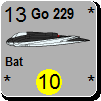







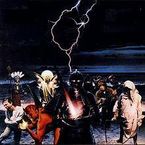




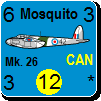




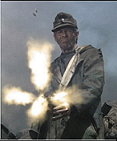
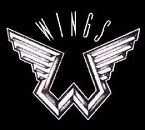

 New Messages
New Messages No New Messages
No New Messages Hot Topic w/ New Messages
Hot Topic w/ New Messages Hot Topic w/o New Messages
Hot Topic w/o New Messages Locked w/ New Messages
Locked w/ New Messages Locked w/o New Messages
Locked w/o New Messages Post New Thread
Post New Thread